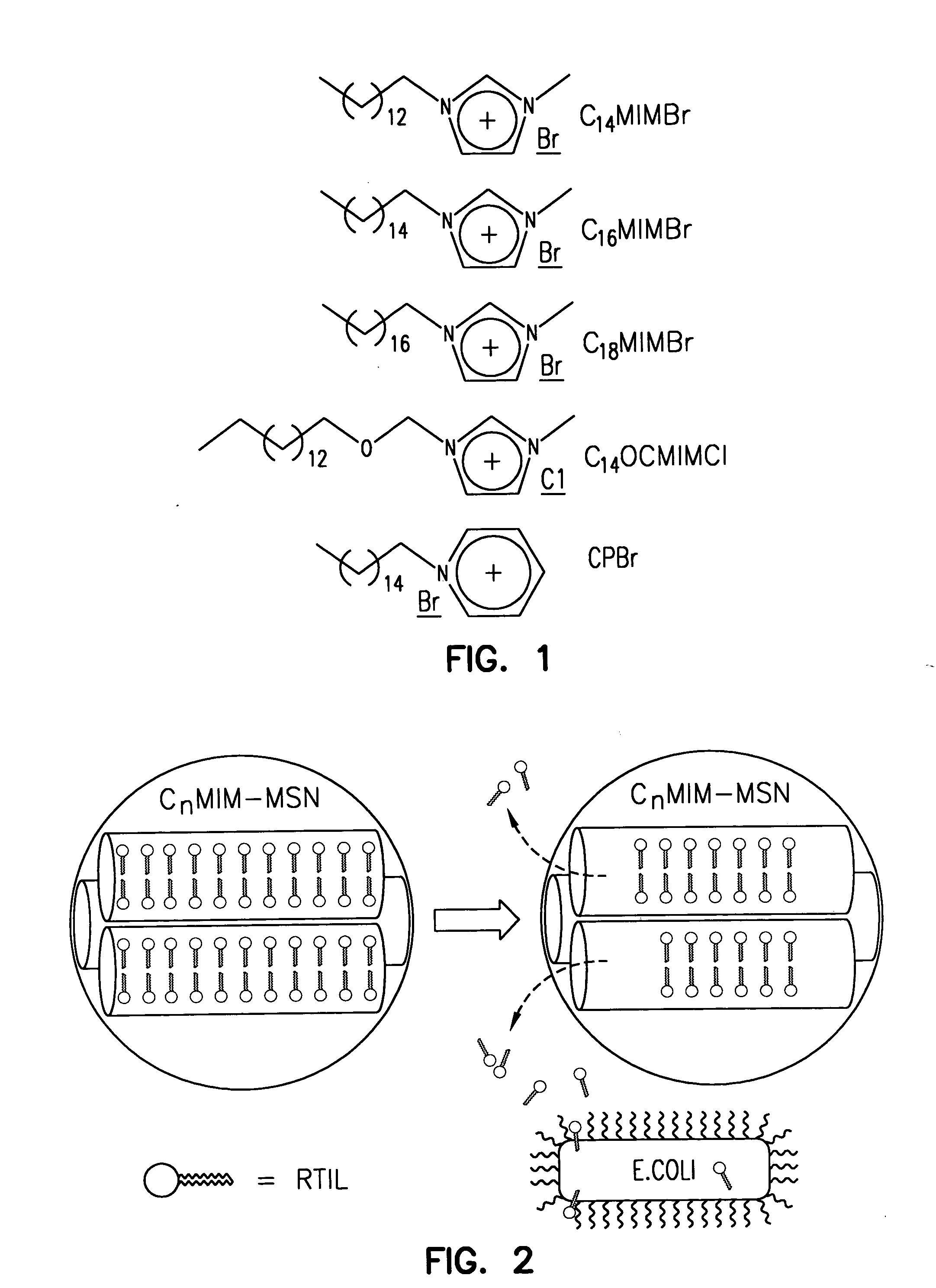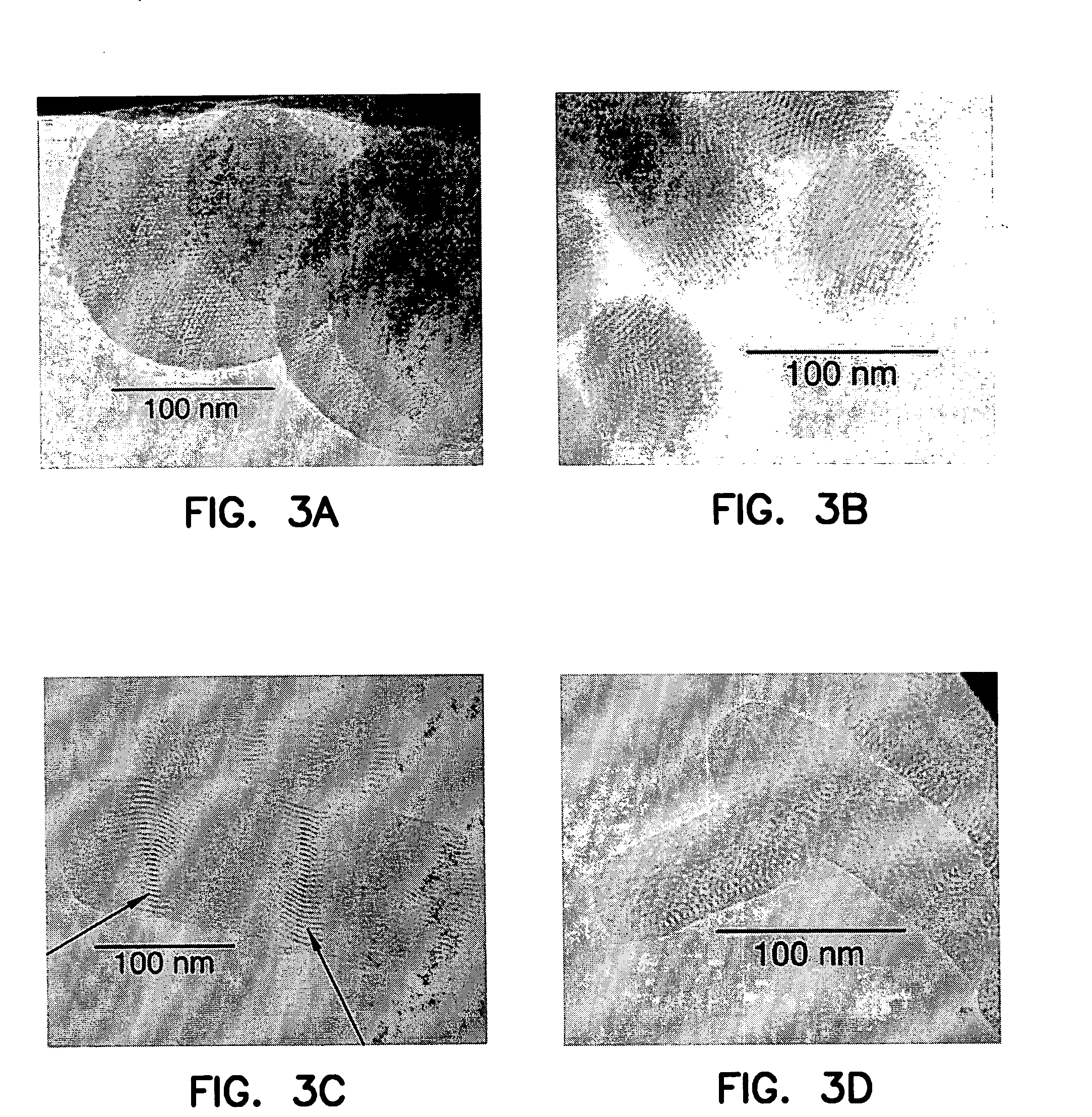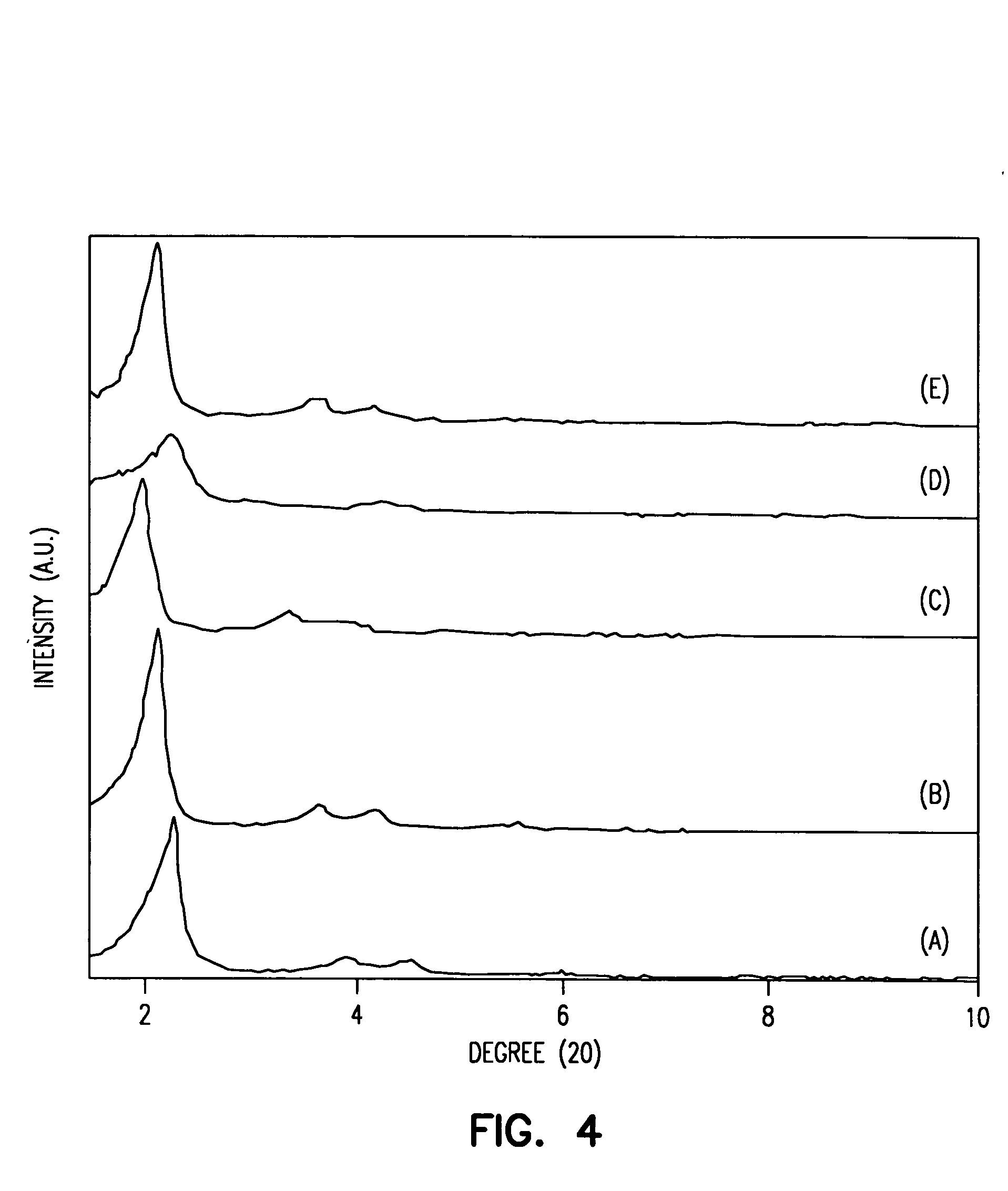Antimicrobial mesoporous silica nanoparticles
a technology of mesoporous silica and nanoparticles, which is applied in the direction of aerosol delivery, dispersion delivery, inorganic non-active ingredients, etc., can solve the problems of undesirable modification of the structure or function of the encapsulated molecules, and no study on how the particle morphology (size and shape) could be regulated by these rtils, so as to reduce the production of volatile sulfur compounds and slow the diffusion rate of antimicrobial agents
- Summary
- Abstract
- Description
- Claims
- Application Information
AI Technical Summary
Benefits of technology
Problems solved by technology
Method used
Image
Examples
example 1
Synthesis of MCM41-Type RTIL-Templated Mesoporous Silica Nanosphere with Organo-Functionality
[0069] Mesoporous silica particles with organo-functionalized groups covalently bonded to the pores can be prepared by the procedure described below. Any suitable organic group can be incorporated by varying the organic group attached to a trialkoxy-silane. The following example describes the use of mercaptopropyl-trimethoxysilane (MPTMS) to obtain a mercaptopropyl-derivatized mesoporous silica nanosphere material (thiol-MSN). Suitable variations of the procedure can be used, such as those described by Lin, V. S.-Y., et al., J. Am. Chem. Soc. 2001, 123, 11510-11511; and Lin, V. S.-Y., et al., J. Am. Chem. Soc. 2002, 124, 9040-9041. RTILs can be used in place of the ammonium salt to prepare RTIL-templated MSNs.
[0070] N-Cetyltrimethylammonium bromide (CTAB, 1.00 g, 2.74×10−3 mol) was dissolved in 480 mL of Nanopure water. NaOH(aq) (2.00 M, 3.50 mL) was added to CTAB solution, followed by adj...
example 2
[0073] The synthesis and characterization of a series of mesoporous silica nanoparticle (MSN) materials with various porous structures and particle shapes is described herein. Particle shapes such as spheres, ellipsoids, rods, and tubes can be prepared by using different RTIL templates, such as 1-tetradecyl-3-methylimidazolium bromide (C14MIMBr), 1-hexadecyl-3-methylimidazolium bromide (C16MIMBr), 1-octadecyl-3-methylimidazolium bromide (C18MIMBr), 1-tetradecyloxymethyl-3-methylimidazolium chloride (C14OCMIMCl), and cetylpyridinium bromide (CPBr), respectively (see FIG. 1).
[0074] The C14MIMBr, C16MIMBr, and C18MIMBr RTILs were prepared by reacting 1-methylimidazole (50 mmol) with 50 mmol of 1-bromo-tetradecane, 1-bromo-hexadecane, and 1-bromo-octadecane, respectively, at 90° C. for 48 hours. The products were purified by recrystallization in THF. The resulting white crystals were collected by filtration, and dried under vacuum at room temperature. The C14OCMIMCl ...
example 3
Delivery of Antibacterial Agents
[0087] To study the mass-transport properties of these CnMIM-MSN materials, we the controlled release profiles of these materials was investigated by utilizing the templating RTILs as antibacterial agents against the Gram (−) microbe Escherichia coli K12 as depicted in FIG. 2. Results indicated that the rates of release of the RTILs from the MSN materials are governed by the particle and pore morphology leading to different antibacterial activities.
[0088] It is widely known that cationic surfactants possess antibacterial properties, several can be found in household soaps and detergents (Davis, B.; Jordan, P. In Ind. Appl. Surfactants 2; Royal Society of Chemistry, 1990; Vol. 77, pp 195-210; Karsa, D. R., Ed.; Royal Society of Chemistry; Cambridge, 1990; Vol. 77, pp. 195-210). A recent report (Pemak, supra) has demonstrated the antibacterial activity of C14OCMIMCl on both Gram (+) and Gram (−) microbes. The mechanism of the antibacterial activity of...
PUM
| Property | Measurement | Unit |
|---|---|---|
| pore diameter | aaaaa | aaaaa |
| pore diameter | aaaaa | aaaaa |
| pore diameter | aaaaa | aaaaa |
Abstract
Description
Claims
Application Information
 Login to View More
Login to View More - R&D
- Intellectual Property
- Life Sciences
- Materials
- Tech Scout
- Unparalleled Data Quality
- Higher Quality Content
- 60% Fewer Hallucinations
Browse by: Latest US Patents, China's latest patents, Technical Efficacy Thesaurus, Application Domain, Technology Topic, Popular Technical Reports.
© 2025 PatSnap. All rights reserved.Legal|Privacy policy|Modern Slavery Act Transparency Statement|Sitemap|About US| Contact US: help@patsnap.com



